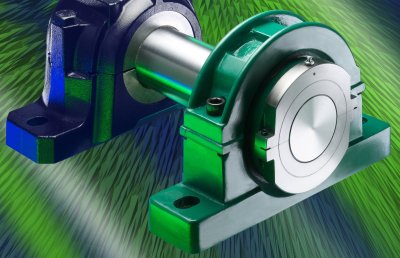Split bearings could slash SN and SD replacement times by 85%
Revolvo, Wyko’s specialist bearing manufacturer, has developed a split roller bearing (SRB) that accommodates standard SN and SD plummer blocks. It claims that this development will result in dramatically lower downtime costs for users of SN and SD bearings.
SN and SD bearings are used widely in industry to support rotating shafts in applications such as conveyors, fans, line shafts and mill motors. However, they can be time-consuming and difficult to replace because surrounding equipment usually needs to be removed and replaced. This means that the replacement can sometimes take days to complete. By contrast, replacing SRBs can take as little as 1–2 hours.
Until now, however, bearing users have found it difficult to replace solid SN and SD bearings with split bearings, because there is no ISO standard governing the boundary dimensions of split bearings. SRB shaft centres tend to be higher, requiring users to raise their shaft centres before they can install an SRB. This potentially costly and time-consuming operation has made it difficult to change from sold to split bearings.

Revolvo claims that its new dimensionally interchangeable bearings (shown above) overcome these problems and could be up to 85% quicker to replace than solid bearings. This speed is aided by a new design of cage clip which is held in one half of the cage during assembly and disassembly, avoiding the problem of lost clips.
Revolvo asserts that its SRBs have other advantages over solid bearings including:
º their ability to self-align themselves, avoiding the need to realign the bearing housing with the shaft or other in-line equipment;
º improved reliability, because they can accommodate thermal expansion of the shaft;
º an ability to perform reliably at temperatures up to 140°C and in aggressive environments, because their seals always stay concentric to the shaft, even if the shaft is misaligned; and
º the ease of inspecting the bearings as is required regularly in some industries as part of planned maintenance regimes.





